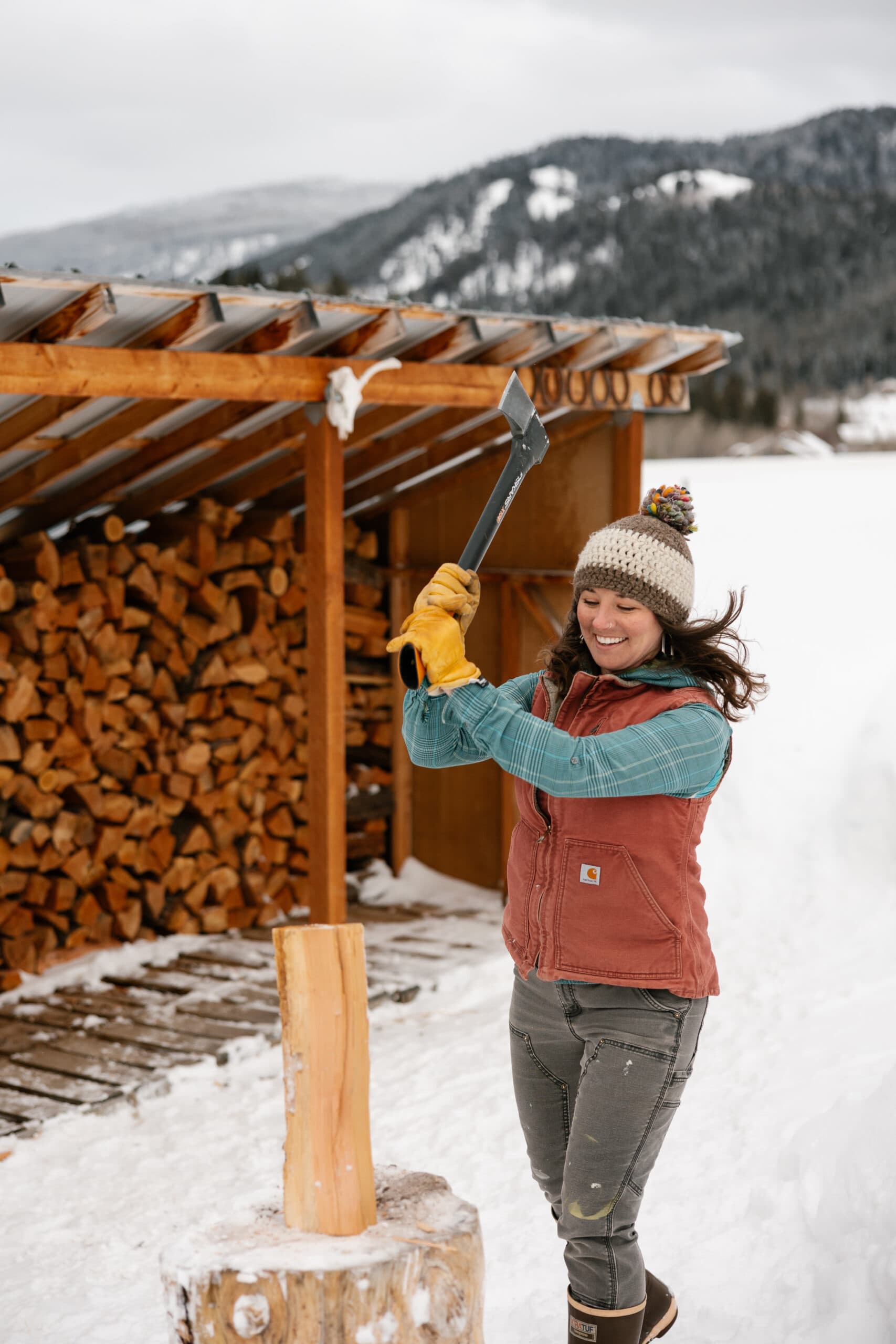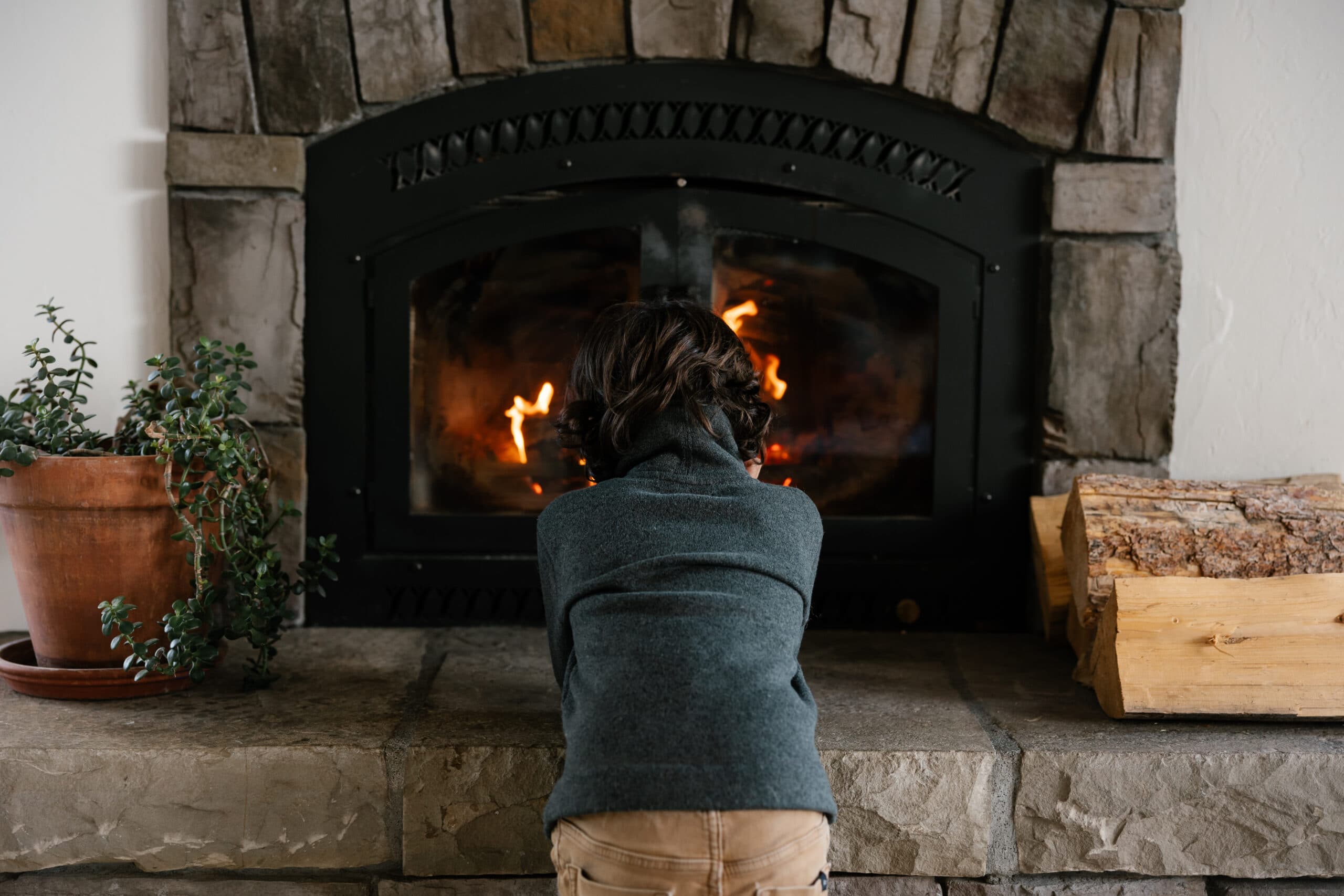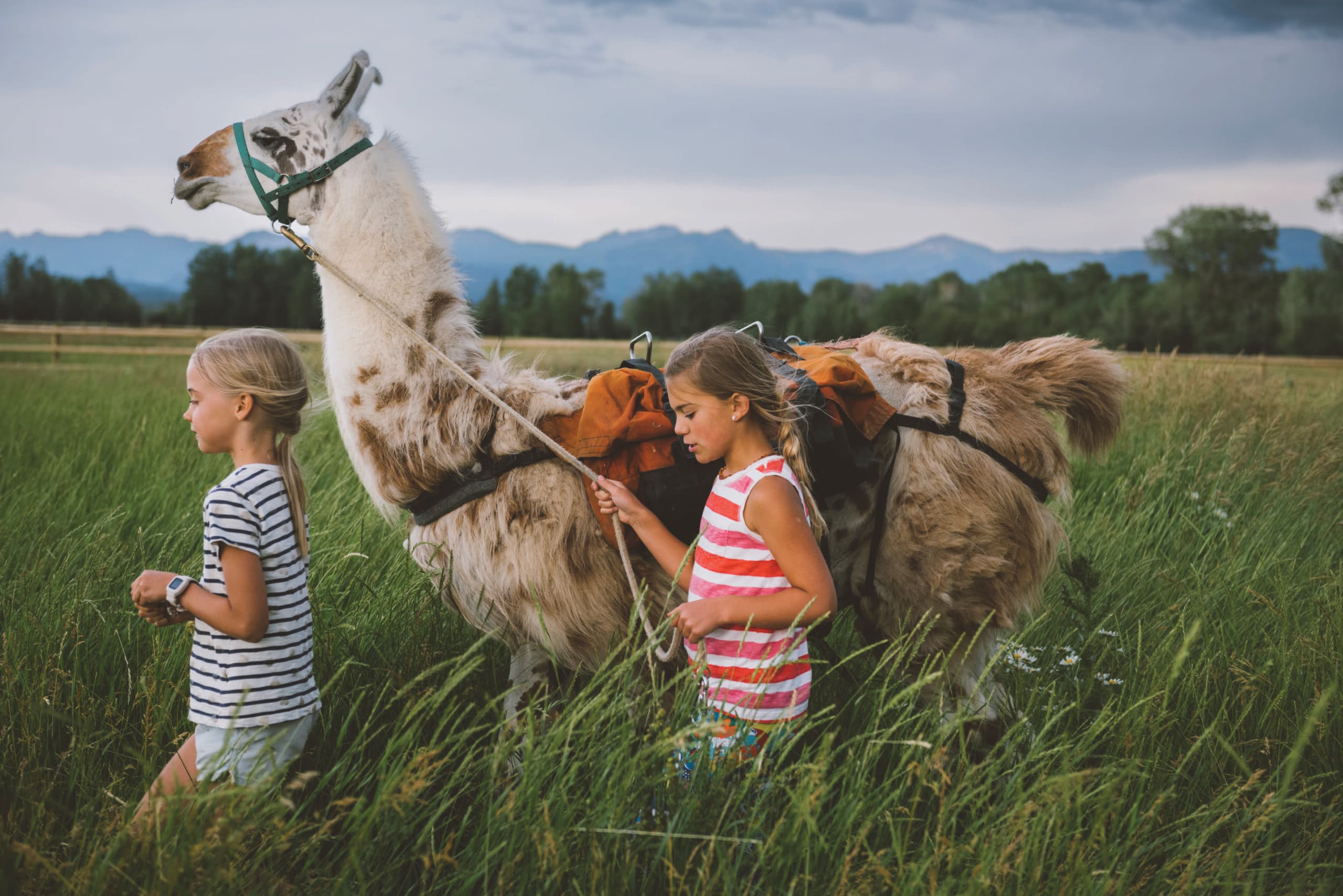Wood Work

The art of gathering firewood
Few things are more satisfying on a frigid winter’s eve in Teton Valley than cozying up to a wood-burning stove, watching the flames do their dance … and listening to the pops and crackles of steam pockets bursting open (although excessive crackling and popping are signs of insufficient firewood seasoning … read on).
If you fell, delimb, buck, haul, split, and stack your own firewood, a large measure of satisfaction comes from reflecting on a whole bunch of hard work well done.
If you’re new to the art, try to get some on-the-job training by going out with an experienced friend. They’ll welcome the help loading the logs or rounds into their truck or trailer, and you’ll learn a lot through observation and participation.
Eventually, you might become one of those who turns firewood gathering into a family affair. “Firewood cutting equals our fall and late summer family outings,” says Kristi Yorks of Victor. “We like our adventures to be purposeful; plus, the kiddos, four and one, definitely enjoy it.”
The same goes for Denise Bertsch Gardner, also of Victor, whose kids are a bit older: “We all scout for dead standing [trees], hubby fells and bucks, and the kids and I load and unload the truck. The kids have fun playing in the woods while the bucking is accomplished.”
What to Cut and Where to Cut It
To harvest firewood on the Caribou-Targhee National Forest, which comprises most of the mountainous public lands surrounding Teton Valley, a firewood permit (granting permission to cut fallen and standing dead trees) must be obtained—locally, at the Teton Basin Ranger District office in Driggs. A four-cord minimum purchase is required, at $6.25 a cord. Permits for up to eight cords per household may be obtained, for a grand total of $50.
A cord measures four-by-four-by-eight-feet, computing to 128 cubic feet. A cord of Douglas-fir or lodgepole pine can weigh close to a ton, so a half-ton pickup can typically haul about half a cord. That would be eight sweat-and-toil outings for eight loads to accumulate four cords, a reasonable target for those wanting to heat an average sized home. (Maybe signing on with Fall River Propane is sounding better all the time?)
In the field, after it’s delimbed, a tree can be cut into six- or eight-foot lengths, sizes reasonably easy to handle if the girth of the log is not too great; if it is, the weight will require that shorter lengths be cut. Logs are subsequently cut into rounds, which some people do in the field and others accomplish after returning home. These are then split into firewood pieces.
Heat output is measured in British Thermal Units, or BTUs. One BTU equals the amount of heat needed to raise the temperature of a pound of water one degree Fahrenheit. Species with dense wood, such as certain eastern deciduous trees, provide the best firewood, releasing more BTUs than species with lighter-weight wood. Some, like oak and hickory, rival coal for their heat output.
However, our surrounding national forest lands tend not to support stands of hickory and oak. Of the conifer species that are common in our canyons and foothills, Douglas fir (#1) and lodgepole pine (#2) are the two that produce the most BTUs. Aspen, another local tree that we love for its shade and quaking nature, is fairly far down on the BTU scale. Not your best choice for firewood.
If you’ll be felling a dead standing tree rather than a tree that’s already down, pick your target carefully. Big snags, as well as any dead trees with cavities or other obvious signs of bird or animal habitation, should be left standing. Douglas fir snags are used for foraging and nesting by various woodpecker species, and the mistletoe “brooms” on snags may be utilized by owls for nesting, and for cover by martens, fishers, and porcupines. Lodgepole pine trees are typically more abundant and “gettable,” anyway.
Cross-county travel, no farther than 300 feet from an open road, is permitted for firewood gathering, if the slope is less than 40 percent and the ground is not wet. The intent is to enable a firewood gatherer to drive to a downed tree, cut it up and remove it, and drive back to the road.
Open roads are identified on the forest travel plan map available at the Teton Basin Ranger District office, where you can also inquire about a good place to search for firewood trees … and then maybe consider going to the next legal drainage over, because you’re probably not the first party to be directed to that good place.



Burning firewood at campfire
Tools of the Trade
There are at least two things inherently hazardous about felling a tree: the falling tree itself and the chainsaw used to cut it down. The chainsaw is a tool not to be taken lightly, even if you’re not using it to drop big trees. Never cut firewood when you’re tired, buzzed, or alone. Chainsaw chaps and steel-toed boots should be worn, and so should a hard hat when you’re felling a tree. Ear and eye protection should also be employed.
Cutting down on the top of a log with the chain on the bottom of the chainsaw’s bar is the most common and comfortable way to cut. But you’ll find it’s often necessary to use the top of the bar to cut upward from the underside of a branch or log. This is a bit unsettling at first, because the movement of the chain through the log forces the saw toward you. Note this should be attempted only by seasoned chainsaw users.
Avoid cutting with the portion of the chainsaw known as the “kickback zone,” which is the upper half of the bar’s tip. It can be tempting to do so, especially when delimbing a downed tree. But if that portion of the bar contacts wood while the chain is moving, the saw can kick up and back toward you.
Other tools that will come in handy in the harvest and preparation of forest products include an axe for delimbing; and—back home—a wedge, sledgehammer, and maul. You’ll use the sledge to slam the wedge into the rounds, creating sections small enough to be further split into firewood pieces with the maul. Important: Make sure rounds are sized such that the pieces split from them will fit into your woodstove.
Clean Burning for Cleaner Living
A hot fire may be a cool way to heat your home, but it’s not necessarily the most eco-friendly way to do it.
Dry, or season, your wood—cut to firewood length and split—for at least a year. It should be loosely stacked under cover, more than 25 feet away from your abode. A shed or shelter is best; if you use a plastic tarp, provide ventilation to prevent condensation. The greater the interior surface area exposed to the air, the more rapid and complete the process of eliminating moisture from the wood will be.
With your well-seasoned wood, burn small, hot fires, which will help the fuel burn cleanly. Never allow the fire to smolder. Outside, the plume from your chimney should appear only as heat waves. If you can see smoke, the wood is not burning completely, and the air supply to the fire should be increased.
Now, kick back and watch that fire do its dance. Lots of work to get to this point, yes, but also fulfilling and lots of fun. And to up that fun-factor, consider this tip from Driggs resident Ash Alexander: “Firewood gathering is even better when you combine it with huckleberry picking!”




